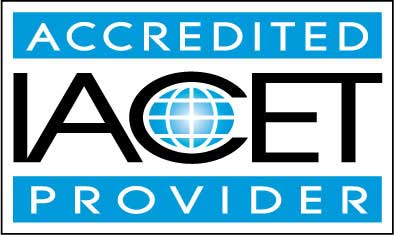Course Description
Mastering Disaster Resilience: Strategies for a Safer Tomorrow
In a world that often seems tumultuous, every news notification might herald a fresh calamity—hurricanes, wildfires, floods, and more. While nature's fury is global, it's not just about the vast expanse of the world outside; it's about the safety of our homes, the wellbeing of our families, and the resilience of our communities. What if you could be better prepared? What if you had the tools to safeguard what you hold dear?
Enter the realm of Disaster Risk Reduction (DRR) - a robust approach tailored to ensure you're not just another statistic in the aftermath of a disaster, but a beacon of hope and strength.
Here's what our course offers:
-
Understanding Disasters: Delve into the anatomy of disasters, understanding their genesis, evolution, and the risks they manifest. We'll unravel how DRR strategies can be your armor against these unpredictable foes.
-
The Environment and DRR Nexus: Our world's health plays a pivotal role in the nature of disasters. Explore how the environment interplays with DRR and how our actions today can shape a safer tomorrow.
-
Harnessing Resources: A deep dive into the pivotal role of resources in disaster scenarios. Learn about their significance, management, and optimal utilization to bolster DRR initiatives.
Emergencies don't send calendar invites; they test our preparedness and resilience. Through "Disaster Risk Reduction in Emergencies," we aim to transform you from a passive observer to a proactive guardian, ready to face challenges head-on.
Are you geared up to fortify yourself and your community against the unpredictable? Dive in and shape a more resilient future!
- Completely Online
- Self-Paced
- 6 Months to Complete
- 24/7 Availability
- Start Anytime
- PC & Mac Compatible
- Android & iOS Friendly
- Accredited CEUs

Learning Outcomes
- Define disaster risk reduction and identify its key components, including preparation, planning, budgeting, training, and education, in emergency management contexts.
- Demonstrate understanding by designing a basic disaster response plan that incorporates community-specific vulnerabilities and resources to minimize the impact of potential emergencies.
- Demonstrate understanding of the connection between emergencies and disasters by categorizing situations accurately based on given criteria.
- Evaluate the impact of emergency preparedness on disaster risk reduction efforts through analysis of case studies.
- Identify actions communities can take to minimize harmful environmental impacts while implementing disaster risk reduction (DRR) plans, using real-world examples for clarity.
- Recognize the environmental factors that contribute to natural disasters and describe their influence on disaster risk reduction (DRR) strategies.
- Describe the risk factors and geographic locations most susceptible to geophysical disasters, including earthquake-prone areas along tectonic plate boundaries and volcanic regions.
- Recognize the signs of an impending geophysical disaster by identifying seismic or volcanic activity indicators such as ground shaking, increased gas emissions, or temperature changes.
- Analyze the environmental and geographical factors that increase the risk of hydrological disasters, including location proximity to bodies of water and insufficient drainage systems.
- Define the term 'hydrological disaster' and identify various types of events that are classified under this category, such as floods and tsunamis.
- Analyze historical climate data to determine potential risk factors and signs of developing climatological disasters in specific regions.
- Identify and describe at least three types of climatological disasters and their potential impact on human populations and the environment.
- Define and describe the characteristics of meteorological disasters and explain their classification as either meteorological or hydro-meteorological events.
- Demonstrate mastery of lesson content at levels of 70% or higher.
Assessment Guide
| Assessment | Points |
|---|---|
| Course Introduction and Goals | 1 points |
| Lesson 1 Quiz | 50 points |
| Lesson 2 Quiz | 50 points |
| Lesson 3 Activity | 1 points |
| Lesson 3 Quiz | 50 points |
| Lesson 4 Quiz | 50 points |
| Lesson 5 Quiz | 50 points |
| Lesson 6 Activity | 1 points |
| Lesson 6 Quiz | 50 points |
| Lesson 7 Quiz | 50 points |
| Lesson 8 Quiz | 50 points |
| Lesson 9 Activity | 1 points |
| Lesson 9 Quiz | 50 points |
| Lesson 10 Quiz | 50 points |
| Lesson 11 Quiz | 50 points |
| Lesson 12 Quiz | 50 points |
| Lesson 13 Activity | 1 points |
| Lesson 13 Quiz | 50 points |
| Lesson 14 Activity | 1 points |
| Lesson 14 Quiz | 50 points |
| Lesson 15 Activity | 1 points |
| Lesson 15 Quiz | 50 points |
| The Final Exam | 350 points |


